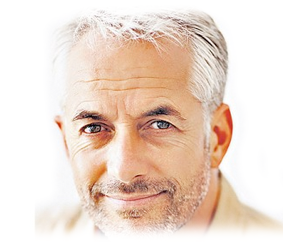Back Pain SmartSite TM | ||||||||||||||||||
Alternative treatmentsAcupunctureAcupuncture is a form of Chinese medicine. It works by changing the pain message that your nerves send to your brain. In an acupuncture treatment:
Acupuncture has not shown any benefits for acute (sudden or severe) low back pain in most people, but it may provide some help for people with chronic (long-term) low back pain. If you decide to try acupuncture, make sure you go to an experienced acupuncturist who uses sterilized equipment. TENSTranscutaneous electrical nerve stimulation (TENS) and percutaneous electrical nerve stimulation (PENS) use low-level electrical pulses to stop back pain. Both of these apply stimulation through the skin. Both TENS and PENS have been tested in medical studies. In these studies, they did not reduce chronic low back pain very much. BiofeedbackBiofeedback measures your body functions and gives you information about them. This information helps you learn to control your body functions. A biofeedback therapist applies sensors to your body and teaches you ways to lower your heart rate, blood pressure, muscle tension, and breathing rate. Becoming aware of your mind-body connection may help you reduce tension and relieve pain. In studies, biofeedback did not help people with chronic low back pain. YogaYoga is a form of exercise that began in India. It combines low-impact movements and meditation. It is meant to bring physical and mental balance. It can also strengthen your muscles. If done regularly, yoga can help prevent low back pain and strengthen the core muscles that support your back. This can decrease the stress in your back and pain. There are many different styles of yoga. If you are just starting out, try a gentle style with a yoga instructor who has worked with people with back pain. For many people, more demanding forms of yoga can make back pain worse. | ||||||||||||||||||
| ||||||||||||||||||
Review Date: 4/3/2018 Reviewed By: C. Benjamin Ma, MD, Professor, Chief, Sports Medicine and Shoulder Service, UCSF Department of Orthopaedic Surgery, San Francisco, CA. Also reviewed by David Zieve, MD, MHA, Medical Director, Brenda Conaway, Editorial Director, and the A.D.A.M. Editorial team. View References:  The information provided herein should not be used during any medical emergency or for the diagnosis or treatment of any medical condition. A licensed medical professional should be consulted for diagnosis and treatment of any and all medical conditions. Links to other sites are provided for information only -- they do not constitute endorsements of those other sites. No warranty of any kind, either expressed or implied, is made as to the accuracy, reliability, timeliness, or correctness of any translations made by a third-party service of the information provided herein into any other language. © 1997- A.D.A.M., a business unit of Ebix, Inc. Any duplication or distribution of the information contained herein is strictly prohibited. | ||||||||||||||||||
A.D.A.M. content is best viewed in IE9 or above, Firefox and Google Chrome browser. | ||||||||||||||||||











